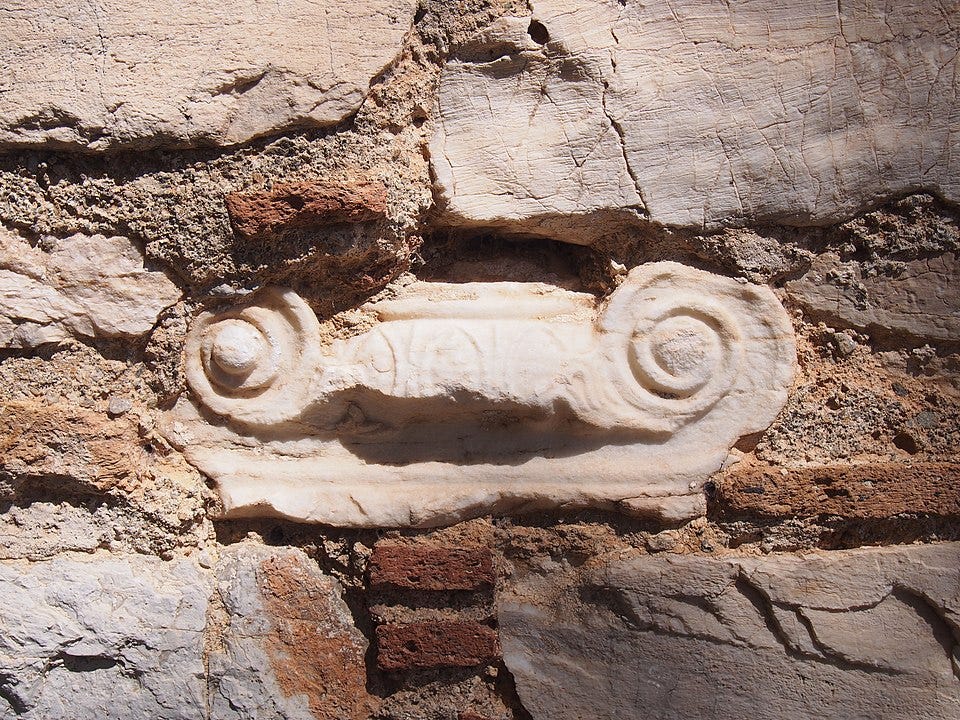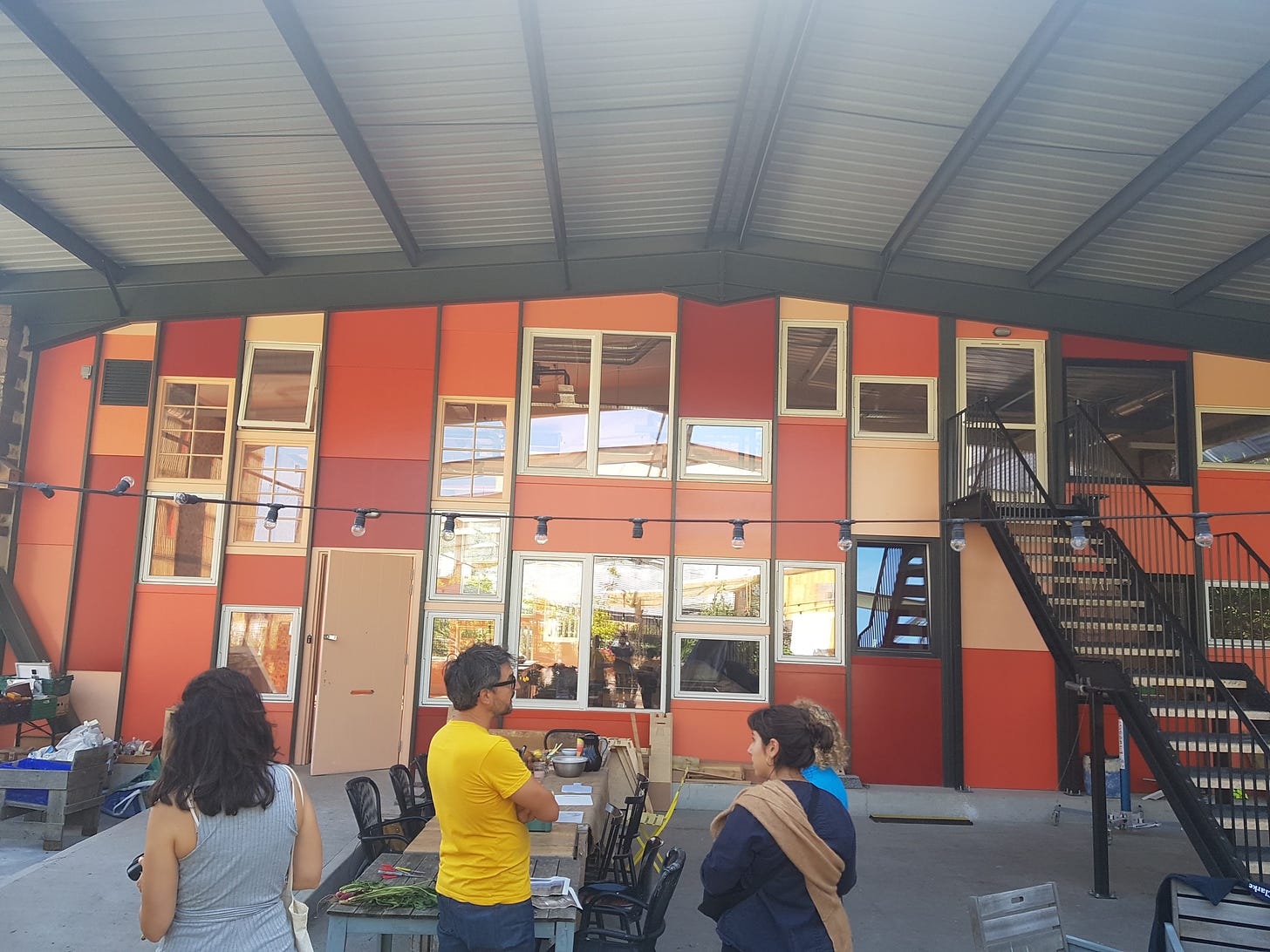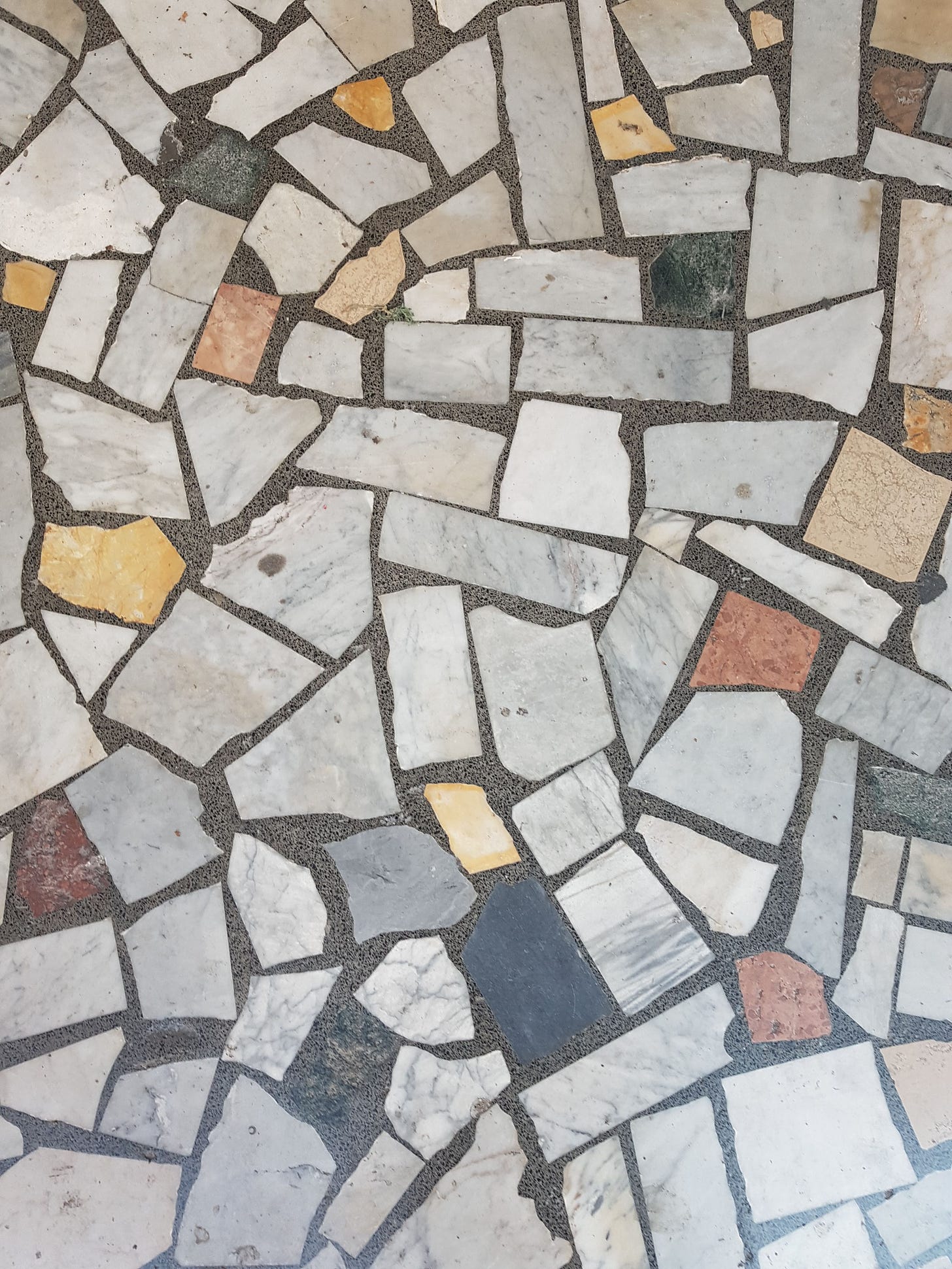Welcome to the first installment of the new format of the Green Urbanist Weekly newsletter. You’ll now be receiving a weekly email with concise and useful ideas on topics related to green urbanism. Don’t forget to to subscribe to the Green Urbanist Podcast on your preferred podcast app.
When I visited Rome last year I was fascinated to see ‘circular economy’ principles used in buildings that were hundreds of years old. After the fall of the Roman empire, many glorious works of architecture fell into disrepair. Not being stupid, the locals made good use of this free material - usually stone - in new buildings. In Italian they call this Spolia but you can see examples of it from all over the ancient world. Below is an example in Greece.
This sort of blatant common sense shown by our predecessors over the millennia makes one wonder why we invest so much energy and money into destroying our older buildings and trucking off their ruins to waste sites or for downcycling into aggregates. Of course a big reason is because buildings made mostly of stone are relatively easy to dismantle and reuse, whereas modern buildings make use of concrete and composite materials that are extremely difficult to reuse.
Circular economy is the latest buzzword in architecture and sustainability. But in reality there is nothing new about it. To really make progress towards a circular economy and urbanism, we need to relearn the lessons from the past:
Use natural and minimally processed materials.
Construct buildings in a way that can be easily deconstructed.
Use locally available materials - ideally from within the city itself.
There are several recent shining examples of circular principles in architecture. Recently I had the pleasure of chatting to Jan Kattein about his project, The Paper Garden (pictured above), which is made of 60% reused materials, including salvaged doors and windows and donated railway sleepers. Listen to our conversation here.
Amin Taha and Steve Webb are (re)pioneering the use of stone in architecture and raising the profile of this sustainable material, showing its low embodied carbon as well as circular benefits. I spoke to Amin and Steve on the podcast here.
But what about the public realm? We are still laying our roads with asphalt, a material that is partially derived from fossil fuel, decidedly un-circular, with a low lifespan and a huge contributor to the urban heat island effect. Replacing asphalt with stone paving would solve many of these problems but at an additional cost and reduced performance for vehicles, which is why is is typically saved for pavements and plazas. A starting point would be to at least stop specifying concrete for pavements and instead opt for locally-sourced stone or reused stone pavers. Italy again offers inspiration here. Below is a pavement I spotted in Tuscany, which seems to make use of off-cuts from the local marble industry. Absolutely stunning and hard-wearing but unfortunately a bit slippery when wet!
psssst… this newsletter isn’t a secret! Share it with someone else!
What did you get out of this newsletter? Got any good examples of circular economy in action? Comment on the post!
See you next week,
Ross







Hi Ross, I've listened to your podcast for a little while after you ran a session at UCL. I loved your discussion with Jan Kattein, reminded me of when I used to volunteer regularly with Goodgym and moved my fair share of wood chip in the Story Garden, it's wonderful to see what it's become!
I liked the topics on reusing materials and bringing councils on board with more adventurous projects - I'd love to hear your thoughts on
1. Whether there is the possibility of a marketplace/directory for trade people/developers so that materials can be reused rather than relying solely on contacts like Jan was lucky enough to have?
2. Possibility of creating a catalogue of unconventional materials that have been building regulator tested so each project doesn't have to repeat work?
3. Do you think engineers/architects are being taught at the uni level to be more creative and driven more by what is available rather than just ordering materials new?
Also apologies if this is already on your radar but Jan mentioned mud and straw techniques and it reminded me there is an amazing exhibition atm in Bristol by Elias Sime who helped create a fantastic mud and straw made art museum in Ethiopia https://arnolfini.org.uk/whatson/eliassimeeregata/
Hi Ross, I've not had to build any buildings recently (uh... or ever, really...) but I am trying to be more circular and sustainable in other areas of my life. It is made so hard by the constant use of composite materials by manufacturers, though, from clothing to furniture to cleaning products. I make my own skincare and cleaning products now, but I'm no seamstress. Clothing using material from a single source is marketed as 'pure' silk or or cotton or linen or wool and the prices inflated enormously. It seems from what you say that this is a problem across the board.